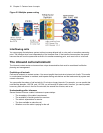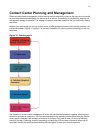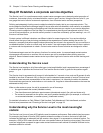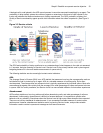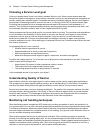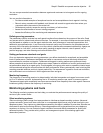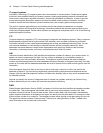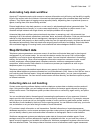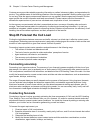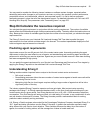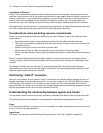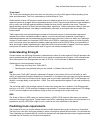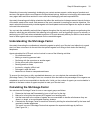26 Chapter 3 Contact Center Planning and Management
IT support systems
Information Technology (IT) support systems are commonplace in contact centers. Contact center agents
divide their time between listening to customer requests, entering and updating customer information and
other entries, searching for required information, and providing feedback to customers. In order to provide
prompt and complete information, agents must have immediate online access to information including
customer records and case histories, products and services, and company policies and procedures.
The push to increase agent efficiency and customer service has placed new demands on computer
information systems and information technology. Information products that enhance agent productivity are
continually being developed. Contact center systems are designed to incorporate some, or all of the following
specialized support functions.
CTI
Computer telephony integration (CTI) is the merging of computers and telephone systems. Today’s computer-
based telephone systems deliver synchronized voice and data, voice and data conferencing, automatic
information retrieval for calls, caller-based messaging and routing, and desktop productivity tools. You can
use customer databases in call handling to enhance customer service and agent productivity. When
databases are shared between contact center departments each agent can access a caller’s contact
information, purchasing records, call history, and preferences by a caller ID number.
ANI
Automatic Number Identification (ANI) identifies the telephone numbers of callers to your contact center, so
agents can receive screen pops with calls. You can connect a database to your telephone system to
simultaneously send calls and caller information. The telephone system forwards the caller’s telephone
number to a software application that relays database records on the caller to the agent. Alternately, the caller
enters an ID number that the database associates with a set of records for the caller and the agent is sent the
information.
ANI saves agents time since they do not have to ask for and enter a name for a caller, and wait for the
database to respond. This time savings significantly impacts staffing requirements and telephone service
charges. ANI also identifies telephone numbers of callers who abandon calls so they can be contacted later
for potential business.
Reports can identify the volume of usage and costs of internal line numbers, and help you track the long
distance distribution per line number and maximize long distance efficiency.
DNIS
Dialed Number Identification Service (DNIS) is a feature of toll-free lines that identifies the telephone number
the caller dials. This assists agents who handle calls for more than one business or product line. Each
business or product line has its own toll-free number. When a caller dials a toll-free number, the telephone
system forwards information to the agent so the agent can identify who the caller dialed. For example, a caller
dials a toll-free number for a cruise line. The telephone system sends a script to the agent along with the call.
The agent then knows to answer “Good morning. Thank you for calling Southern Cruises,” instead of the
name of another cruise line serviced by the center.



